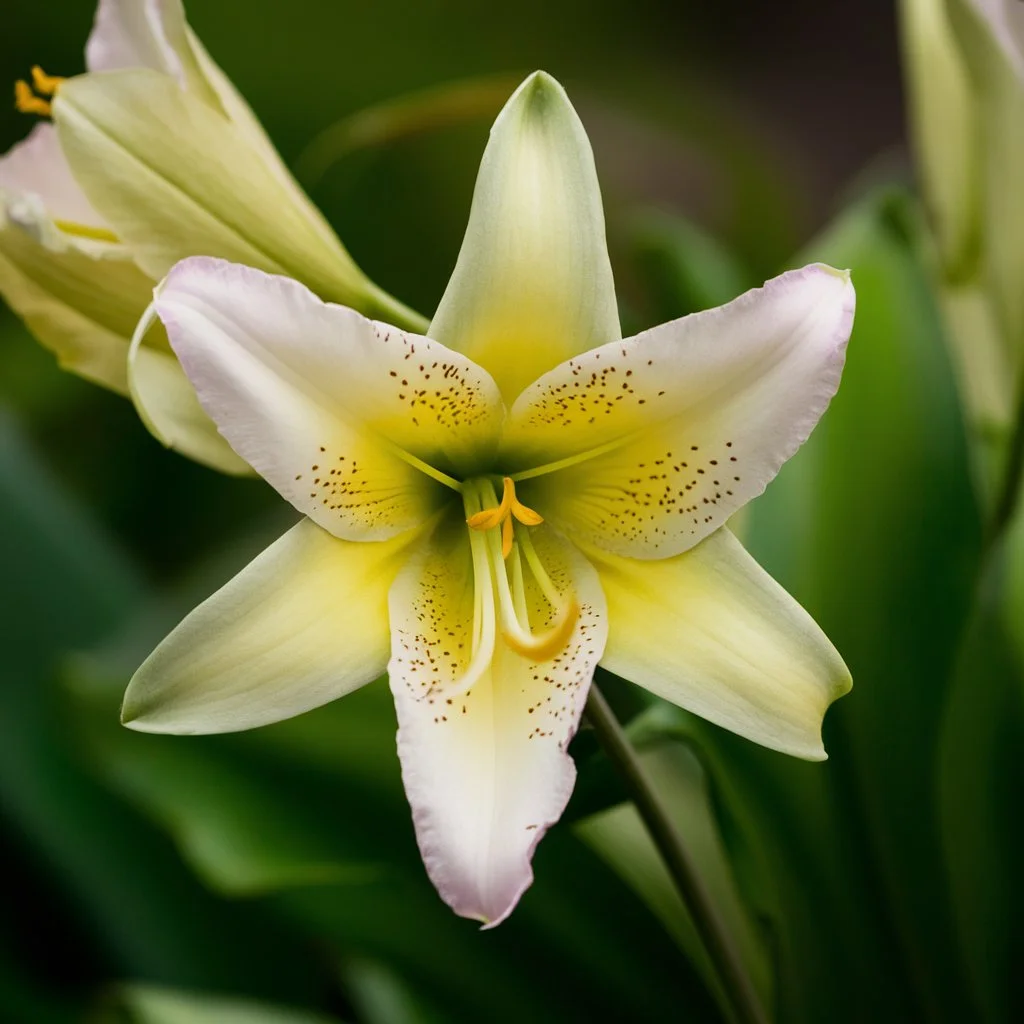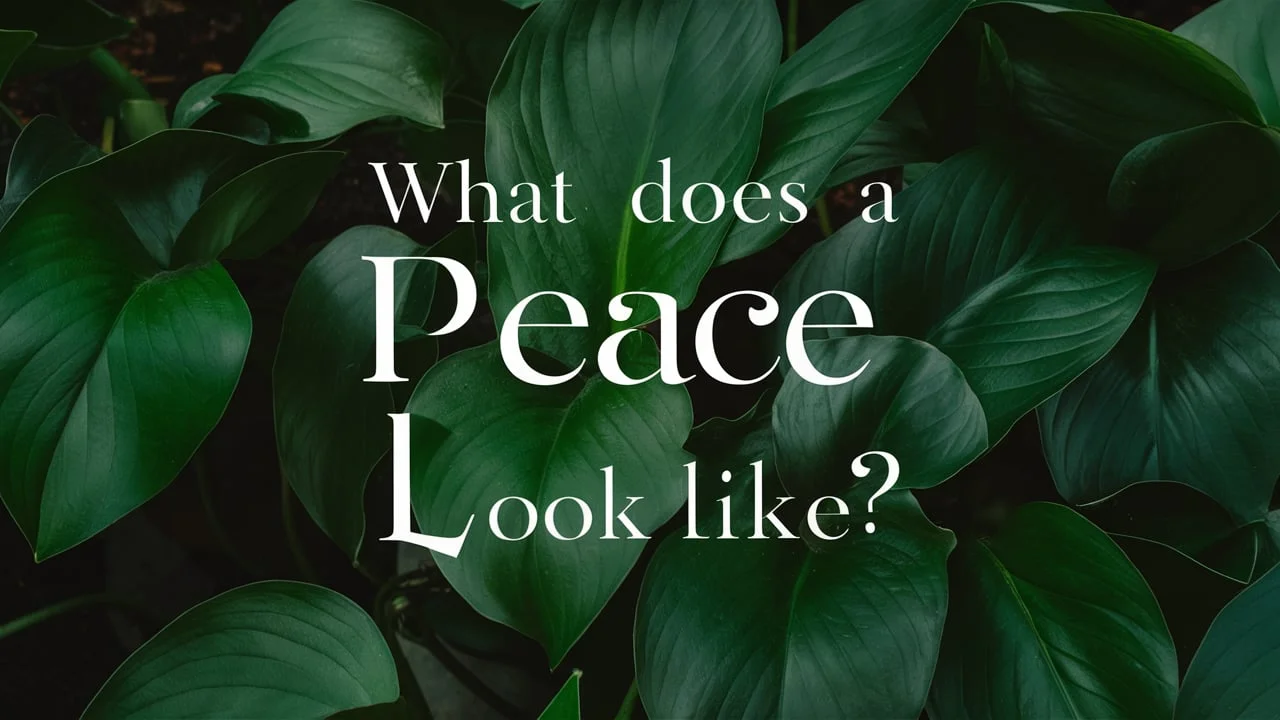Peace lilies are one of the most loved houseplants known for their rich green leaves and magnificent white flowers. But what does a peace lily look like? in detail? Their tranquil beauty and ease of cultivation have made them popular among plant enthusiasts as well as those new to gardening. In this extensive guide, we will explore the physical properties, growth conditions, care hints, and common problems associated with peace lily that help explain their uniqueness.
The Anatomy of Peace Lily
The Leaves
One striking feature of the peace lily is its leaves. They are broad in shape like spears with dark green surfaces that may be lustrous emerald colors. These leaves can grow quite large and some types have up to twelve inch long leaves. Not only does foliage add to visual appeal but it also plays an important role in air purification.
Shiny Texture: A glossy finish on the leaves bounces light off them hence making the plant look vibrant and healthy.
Deep Green Color: This indicates a healthy plant and makes a lovely contrast with white flowers.
Spear-shaped: The tapered tips give it more elegance.
The Flowers
A peace lily’s flower is essentially composed of two parts, namely spathe and spadix. The spathe is a petal-like covering surrounding the spike which contains tiny flowers called spadex.
Spathe: It is often confused with the flower itself because it envelopes the spadex elegantly with big white bract that over time changes color to greenish.
Spadix: Small blossoms within this central spike characterize the true blooms of peace lily. Spadix could be yellowish or whitish in hue or sometimes even slightly greenish appearance.
Types of Peace Lilies
Peace lilies belong to genus Spathiphyllum which encompasses various species as well as countless cultivars. Some notable cultivars include:
Spathiphyllum wallisii – This species is very common and is usually small to medium sized.
Spathiphyllum cochlearispathum – It has larger spathes, as well as being bigger in itself.
Spathiphyllum ‘Mauna Loa Supreme’ – This plant has extra large leaves and spathes that are ideal for dramatic indoor displays.
Growing Conditions for Peace Lilies

It’s crucial to provide the right growing conditions if you want your peace lily to thrive. These plants come from tropical areas, so they like their environment to be similar.
Light Requirements
Peace lilies thrive under low to medium light making them ideal for indoors. They can adapt well to fluorescent lights hence best options for dimly lit places in homes or offices.
Indirect Light: Bright indirect light is optimal for them as direct sunlight scorches the leaves and makes them turn yellow or brownish.
Low Light Tolerance: Though it can survive in poorly lit spaces, too little sun will cause less flowering.
Watering Needs
The soil should always be kept moist but not wet. The key here is watering correctly since improper watering may lead to root rot among other issues that might arise when growing this plant.
Soil Moisture: When the topmost inch dries out water your peace lily. Over watering leads to root rot hence ensure adequate drainage of your pots.
Humidity: These plants do well in humid environments. Spray the leaves or place it near a humidifier that can maintain sufficient levels of humidity.
Temperature preferences
Peace lilies prefer temperatures between 65-80°F (18-27°C). They do not take well to temperature changes, therefore keep them from drafts, air conditioners or heaters.
Consistent Temperature: Keep your peace lily in a stable environment to prevent stress.
Avoid Cold Drafts: Letting cold air get into contact with the leaves can affect their health and limit growth.
Caring for Your Peace Lily
Proper care is essential to keep your peace lily looking its best. Here are some tips to ensure your plant remains healthy and vibrant.
Repotting
It is necessary for you to repot your peace lily every 1-2 years so as to give it fresh soil and enough space for expansion. Spring is the best time of year for repotting.
Choose the Right Pot: Ensure that you use a pot that is at least 1-2 inches larger in diameter than its current pot size.
Fresh Potting Mix: Use houseplant potting mixes which can drain out well.
Fertilizing
Use balanced water-soluble fertilizer once in six to eight weeks during spring and summer. Leaf burn happens due to over-feeding on such plants hence excess fertilizers must be avoided.
Diluted Fertilizer: To prevent build up of nutrients always use diluted fertilizer solution.
Regular Feeding: Continuous feeding ensures good growth and flowering.
Pruning
Regular cutting helps maintain the appearance of the plant while encouraging new shoots. Take off brown or yellow leaves as well as dead blooms in order to maintain its freshness of your peace lily’s leaves.
Remove Dead Leaves: At the bottom, cut any yellowed or brownish-colored leaves off completely from your piece lily leaves..
Spent Blooms: Cut-back spent flowers encouraging reblooming by these houseplants..
Pest Control
Spider mites, aphids etc., can sometimes attack peace lilies although this is rare. Insecticidal soap or neem oil are the best for controlling these pests.
Inspect Regularly: Check your plant regularly for signs of pests.
Natural Treatments: Use natural pest control methods to avoid harmful chemicals.
Propagating Peace Lilies
Peace lilies can easily be reproduced by dividing them into sections in which each section becomes a new plant from the main one.
Steps to Propagate
Remove the Plant: Gently remove the peace lily from its pot.
Divide the Root Ball: Carefully split up the root ball making sure that each retaining at least one healthy leaf and root.
Repot: Repot each division in fresh potting mix and put it in different pots.
Water: Place new plants under water so that they become well soaked before putting them into suitable growing conditions..
Visual Appeal and Aesthetic Uses

Peace lilies are not only functional but also highly decorative. They are appropriate for many sites because have a sleek, elegant form.
Indoor Décor
Peace lilies can bring greenness to any indoor space. They can be placed in living rooms, offices, bathrooms, and bedrooms.
Living Rooms: Put your peace lily inside a beautiful vase to look more stylish in your room..
Offices: Peace lilies thrive in low light, making them ideal for office spaces..
Bathrooms: They love humidity hence good for washrooms.. .
Complementing Other Plants
You can create an indoor garden by grouping peace lilies with other houseplants. Their white flowers and dark green leaves contrast beautifully with other foliage plants.
Ferns: Combine peace lilies with ferns for a tropical look..
Snake Plants: Pair with snake plants for a modern, minimalist arrangement..
Pothos: The falling branches of pothos go along very well with such plants’ erect growth..
Health Gains
In addition to their good looks, peace lilies provide a number of health benefits. They are reputed for their air purifying characteristics, which can enhance the quality of indoor air.
Air Purification
Peace lilies can help clean up the air by removing common household pollutants promoting healthier indoor spaces.
Formaldehyde: Found in furniture, cleaning products, and building materials.
Benzene: Present in paints, detergents, and plastics.
Trichloroethylene: Common in dry-cleaning solvents and adhesives.
Humidity Regulation
Peace lilies can be beneficial for respiratory health by increasing humidity levels in your home.
Moisture Release: This plant humidifies the air through transpiration process because it emits moisture into its surroundings when growing.
Breathing Comfort: High humidity helps cure dry skin lesions, sore throats or other respiratory distresses.
Peace Lily in Culture and Symbolism
Different cultures have accorded peace lilies cultural and symbolic significance. They are often connected with peace, purity and hope.
Symbolism
The white flowers of the peace lily denote purity and peacefulness. They are commonly used in religious rites and services for spiritual significance due to their coloration being white.
Purity: The white spathe signifies purity as well as innocence.
Peace: People often give these plants as presents on occasions related to mourning so that they symbolize quietness and consolation among friends grieving together about something very hard to bear..
Cultural Significance
Many cultures use peace lilies during ceremonies to signify harmony or tranquility among them as this is vital part promoting unity within communities who practice such rites. Funerals; Peace Lilies are usually employed during burial ceremonies for symbolism of peace and hope Housewarming; At house welcoming parties they stand for fresh starts symbolizing blooming wealthiness’.
Conclusion
These gorgeous plants do not just purify the air indoors but also act as symbols of peace and purity.
Their striking white flowers and elegant leaves make them an excellent addition to any home or workplace.
By understanding the growing conditions, care requirements, and common problems associated with these plants, you can enjoy the beauty of peace lilies for years to come.
This makes them suitable choices whether you are a beginner or an experienced gardener who want natural elegance in their homes.
Frequently Asked Questions
What kind of light is best for peace lilies?
Peace lilies do best in low to medium, indirect light. Bright but indirect sunlight will encourage flowering.
How often should I water my peace lily?
Water when the top inch of soil is dry. Keep soil moist but not soaked to avoid root rot.
Why are my peace lily’s leaves turning yellow?
Yellowing can be due to overwatering, direct sunlight, or temperature stress. Check care conditions and adjust accordingly
Can peace lilies improve air quality?
Yes, peace lilies are known to remove toxins like benzene and formaldehyde from indoor air.
Is repotting necessary for peace lilies?
Repot every 1-2 years to refresh soil and allow room for growth, ideally in spring.





